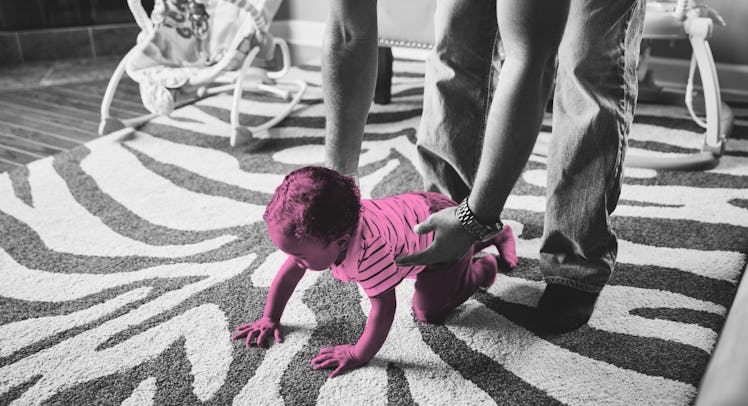How to Motivate a Baby to Roll, Crawl, Cruise, and Walk
Advice from a scientist who spends her days studying infant locomotion.

Anxiety about developmental milestones motivates parents to watch their baby’s moves very, very closely. What do they see? Not much really. According to research, kids learn to move at their own pace, influenced in part by the culture they’re raised in. That doesn’t mean you shouldn’t encourage your kid to move. If encouraging movement is something that will ease a parent’s mind and their kid finds it fun, it’s fine to try and get a kid mobile. You can even employ some specific strategies to make the movement happen. That said, you should also be chill about it.
Dr. Karen Adolph of the NYU Infant Action Lab studies how babies guide their movements over obstacles such as drop-offs, slopes, gaps, and bridges. As such, it’s crucial for her to get babies to move, not just once, but dozens of times, in novel experimental conditions. She has to coax kids to navigate small and large gaps in their path, for instance, or shallow and steep slopes and large and narrow ledges. Obviously, babies being what they are, it helps Adolph to have a “trick” up her lab coat sleeve. The technique, she explains, is largely related to the proximity of their parent and a desirable object.
The Lure
A major consideration is what a parent is offering to motivate the movement. While there’s no one thing that works for every baby, Adolph does say that certain carrots (sometimes literally boiled carrots) are particularly effective. First, it should be an object the baby likes, be it a toy or a snack. Second, it should be low to the ground because babies who are pre-crawling or crawling will have a hard time tilting their head skyward to see something tall or high up.
Encouraging a Roll
A low-to-the-ground, bright, and noisy toy may work well to get a baby to roll over. But the positioning is key. When children are on their back, parents should place the toy to the side of the baby’s head, essentially diagonal to their crown. “What you want them to do is to turn their head, twist their torso, and then bring a leg around to flop on their belly.”
Enticing a Crawl
The position and proximity of the motivational object is pretty crucial for the post-rolling crowd, too. “If you want them to move, I wouldn’t stand across the room, holding a toy and clapping,” Adolph explains. “If you put it a bit out of their reach, several steps, then the baby will go to it.”
That technique works particularly well for getting children to crawl. If they’re able to get on their hands and knees and a toy is just out of reach they will likely lunge for it. But every locomotor skill is different, as is every child. So parents might not see typical crawling. They might see inchworm-like movements or something that looks more like the baby dragging their body, including their face, over the ground using only their arms. It may not be graceful and in fact, Adolph has seen “gazillions” of variations of crawling.
Coaxing a Cruiser
Cruisers will do well with moving toward a toy just out of arm’s reach on a couch cushion, for instance. For soon-to-be walkers, it’s time to go from one parent to another. But there’s no need to start at opposite ends of the living room. A parent who’s a step or two away and offering happy encouragement should do the trick to get a kid to take their first lunging steps.
All of this comes with a huge caveat of course. “Despite all of these tricks, the baby just has to be ready,” Adolph says. “Just offer something. If they’re ready to do it, they’ll do it.”
This article was originally published on